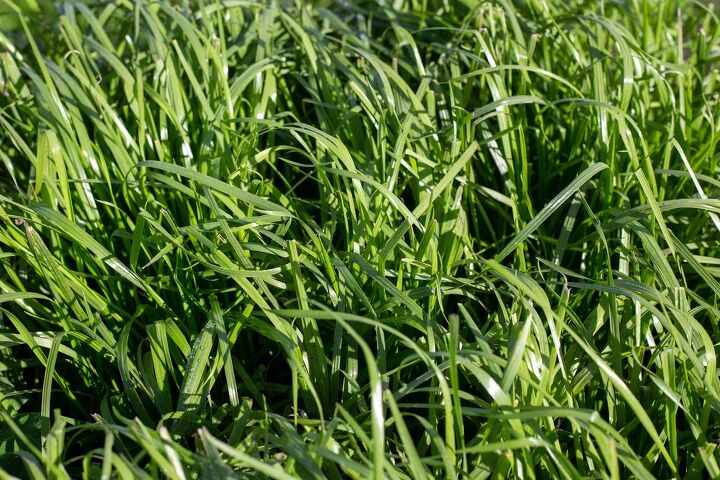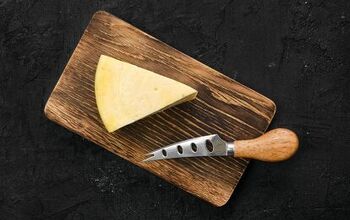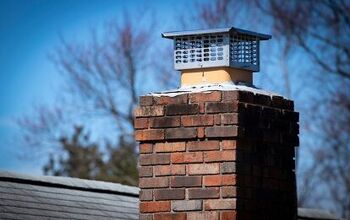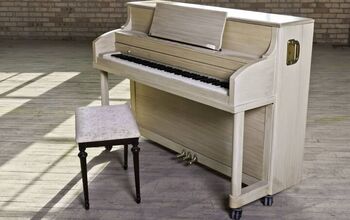9 Types Of Ryegrass (With Photos)

Ryegrass was once primarily used as a source of food for grazing cattle, and it still is. Now, ryegrass is used for turf, ground cover, and to accentuate surrounding grasses or plants. With all of the practical uses for ryegrass, what are the main types and how do they differ?
Annual and perennial are the two main varieties of ryegrass, and they both do well in cool climates, Wild, winter, Italian, and Festulolium are types of ryegrass that provide excellent groundcover. Marshall ryegrass and intermediate ryegrass grow similarly and have a 7 day germination time.
The differences are often marginal when it comes to the types of ryegrass. Still, it is important to understand what sets them apart to find out which one is ideal for your property. Follow along as we dive into the 9 types of ryegrass.
Do You Need Landscaping Services?
Get free, zero-commitment quotes from pro contractors near you.

1. Annual
You can count on annual ryegrass to come in, grow, and thrive during each cool season. It is most commonly used for turf, but annual ryegrass can suit any need from filling out land to feeding cattle. The ideal time to plant annual ryegrass is during the fall to ensure perfect germination and growth.
Your annual ryegrass can continue to grow in the same patch annually if you use a fertilizer that is full of nutrients. Nitrogen is key and can prime the soil and seeds to create the bunched-together look that annual ryegrass is known for. Annual ryegrass looks great, but its main benefit is that it protects the ground.
The ground coverage of annual ryegrass in conjunction with quality soil can keep weeds out and prevent erosion. Annual ryegrass stays lively during cold weather and the color makes it stand out throughout the winter.
2. Perennial
Perennial ryegrass is so common that it is easy to forget what you’re looking at when you see it. Seeds find their way into lawn mixes because perennial ryegrass is durable and mixes well with other types of grass. As long as it gets a few hours of sun each day, perennial ryegrass will stay thick and healthy.
Be careful when you plant perennial ryegrass seeds because it often has an uneven growth pattern. It is common for perennial ryegrass to grow in small patches with unappealing gaps. You can fix this by filling in the gaps with other types of grass or ryegrass, but it is tough to spot until it germinates.
3. Wild
Wild ryegrass grows in abundance on the west coast of the United States. It is common for wild ryegrass to come in patchy and in clumps, but you can fix that with careful planting. Like most types of ryegrass, wild ryegrass is perfect to use for ground cover.
Wild ryegrass is a great food source for grazing animals, but it is stiffer and less appetizing than other varieties. West coast natives are likely all too familiar with wild ryegrass, and its root systems help it take over large sites. Use wild ryegrass to keep weeds at bay and prevent erosion that can otherwise render your soil useless.
4. Winter
Winter ryegrass stands out from other types of ryegrass because it is a cereal grain. It has been used as a tool by farmers and homeowners for years looking to protect crops and plants from weeds. Weed protection is the main benefit of winter ryegrass, and it can make the difference between successful growth and rotten plants.
Winter ryegrass is also visually appealing and has a classic look. It falls into the category of perennial ryegrass, and you can expect it to continually come back every year. However, winter ryegrass can only come back year after year if it flowers and spreads seeds.
5. Italian
You can enjoy a gorgeous view and lively growth when you plant Italian ryegrass in the winter. Italian ryegrass thrives in the winter and can live for half of the year. However, you can expect your ryegrass to grow and live throughout the year if you plant it in the spring in cooler climates.
It is common to find Italian ryegrass in pastures where farm animals like cows use it for grazing. You can expect your Italian ryegrass to germinate within one week, especially if you use a fertilizer that contains nitrogen. The small flowers on each spikelet of Italian ryegrass are a dead giveaway, and it is one of the most distinct variations of ryegrass.
6. Festulolium
Festulolium combines the best of both worlds of both fescue and ryegrass. It is perennial, and Festulolium grows in bunches that make them easy to eat and digest for grazing animals. You will need to ensure that your soil has good drainage, or your Festulolium may rot.
The main benefit of Festulolium is that it grows quickly and generally stays healthy. Festulolium is durable grass and continues to grow throughout the season even with heavy grazing. The hybrid nature of Festulolium means that it will come in thick, and you won’t have to worry about patchy growth.
7. Marshall
Marshall ryegrass is one of the many variations of annual ryegrass, and it’s quite popular. You won’t likely find Marshall ryegrass growing on a lawn, and it’s mostly used for pastures. It also makes its way into bails of hay, but Marshall ryegrass is primarily used as a cover crop.
Marshall ryegrass can effectively cover and protect your soil to keep weeds and pests at bay. This is especially helpful if you live in a moist climate where soil erosion is a serious threat. Plant your Marshall ryegrass in the fall and winter to ensure healthy growth and soil protection throughout the season.
8. Intermediate
If you are looking for the happy medium between annual and perennial, then look no further than intermediate ryegrass. You can use intermediate ryegrass as turf or as a grazing plain for farm animals. There is no limitation to intermediate ryegrass as long as you don’t plant it in extremely cold temperatures.
Moderate temperatures are ideal for intermediate ryegrass, but intermediate ryegrass is known for being able to adjust to cool climates. Your intermediate ryegrass can germinate in just over one week. Some landowners use intermediate ryegrass as part of a mixture of other grasses to help fill out a pasture and make the most of their seeds.
9. Artificial
Artificial potted ryegrass is both convenient, convincing, and attractive. It looks like the real deal, but artificial ryegrass doesn’t require the care and attention that real ryegrass needs. You can’t necessarily use artificial ryegrass to cover large patches of land, but it is perfect for pots.
Potted artificial ryegrass goes for as little as $18, but they cost $30 on average. It is common to find potted artificial ryegrass near doorways and on porches. They may not look quite as authentic as the real thing, but the average passerby won’ be able to tell the difference.
The main downside to artificial ryegrass is that it serves no practical purpose like the real thing. You can’t use artificial ryegrass as a grazing field, to make hay, or to provide ground cover. This option is only viable if you want to accent an area inside or outside of the house with potted artificial ryegrass.
Related Questions
Does ryegrass make good hay?
Ryegrass makes great hay because of its consistency and the high volume that it can yield. You can ensure that your ryegrass will be good for hay if you plant it in a dry and cool area. Cool climates can make ryegrass seedlings germinate quickly and come in thick which makes it ideal for hay.
Is ryegrass good for horses?
Ryegrass is good for horses, and it is a great grazing field material because of how it grows. It can provide energy and protein for horses, and ryegrass is only toxic if it is contaminated. Inspect ryegrass for contamination before feeding it to animals such as cows and horses.
Do You Need Landscaping Services?
Get free, zero-commitment quotes from pro contractors near you.

Summing It Up
Ryegrass falls into two main categories: annual and perennial. Varieties such as Marshall, winter, Italian, and intermediate ryegrass are all similar but have unique characteristics. Most varieties of ryegrass are ideal to plant in the fall before winter sets in.
Ryegrass can generally handle moderate temperatures up to 75 degrees Fahrenheit. You can use ryegrass to make hay or simply leave it as a grazing field. Marshall ryegrass provides excellent ground cover and can protect against harmful weeds.
Festulolium is the most unique option, and it is a cross between fescue and ryegrass. Make sure to use a fertilizer that contains plenty of nitrogen so that your ryegrass will germinate quickly and thrive.
Related Articles

Nick Durante is a professional writer with a primary focus on home improvement. When he is not writing about home improvement or taking on projects around the house, he likes to read and create art. He is always looking towards the newest trends in home improvement.
More by Nick Durante


































